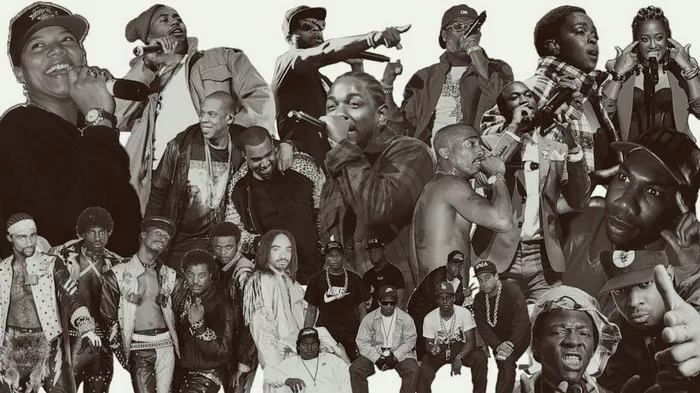Hip hop culture, with its roots in African-American and Afro-Caribbean communities, has evolved into a global phenomenon that has had a profound impact on music, art, and entertainment. Its birth can be attributed to various key elements and pivotal moments that shaped its trajectory. This article aims to delve into the origins of hip hop, highlighting significant events, influencers, and the cultural context that contributed to its development. Additionally, we will explore how hip hop culture has influenced and continues to influence various forms of music, art, and entertainment.
I. The Birth of Hip Hop Culture:
A. Key Elements:
Music: Hip hop emerged as a cultural movement in the 1970s, primarily in the South Bronx, New York. It was influenced by diverse musical genres such as funk, soul, disco, and reggae, which laid the foundation for its unique sound.
MCing: Master of Ceremonies (MCing), also known as rapping, became a prominent element of hip hop culture. MCs used rhymes and rhythmic verses to express themselves and engage with audiences, often addressing social issues and personal experiences.
DJing: DJs played a crucial role in hip hop’s inception, utilizing turntables and mixing techniques to create new sounds. They were responsible for the rhythmic beats and instrumental backdrops that MCs would rap over.
Breakdancing: Breakdancing, or b-boying/b-girling, added a physical and visual element to hip hop culture. Dancers performed intricate and acrobatic moves, often incorporating improvisation and creativity.
B. Significant Events and Moments:
DJ Kool Herc: In the early 1970s, Jamaican-born DJ Kool Herc introduced innovative techniques, such as “breakbeat” DJing, where he extended the instrumental breaks in songs. This practice became the foundation for breakdancing and contributed to the birth of hip hop culture.
The Bronx Block Parties: DJ Kool Herc organized block parties in the South Bronx, bringing communities together through music and dance. These gatherings became a breeding ground for the early hip hop movement, fostering creativity, competition, and collaboration.
“Rapper’s Delight” and “The Message”: The release of Sugarhill Gang’s “Rapper’s Delight” in 1979 and Grandmaster Flash and The Furious Five’s “The Message” in 1982 marked significant milestones in hip hop’s mainstream breakthrough. These songs introduced hip hop to a wider audience, solidifying its place in popular music culture.
II. Geographical and Social Context:
A. The South Bronx:
Economic Challenges: The South Bronx faced socio-economic challenges in the 1970s, including poverty, unemployment, and neglect. These circumstances created a fertile ground for the emergence of hip hop as a means of expression and empowerment.
Community Resilience: Despite the adversity, the South Bronx community found solace and strength in hip hop culture. It provided an outlet for self-expression, creativity, and a sense of belonging.
B. Social Issues and Activism:
Racial Inequality: Hip hop culture emerged against the backdrop of racial inequality and socio-political tensions. It became a platform for artists to address issues of racial discrimination, police brutality, and social injustice.
Cultural Identity: Hip hop culture played a significant role in empowering marginalized communities, allowing them to assert their cultural identity and challenge societal stereotypes.
III. Early Influencers and Contributors:
A. DJs and Producers:
DJ Kool Herc: Often referred to as the “Father of Hip Hop,” DJ Kool Herc pioneered DJing techniques and set the stage for the hip hop movement.
Grandmaster Flash: Known for his technical prowess and innovation, Grandmaster Flash introduced groundbreaking DJ techniques, including backspinning and scratching.
B. MCs and Lyricists:
The Sugarhill Gang: Their hit song “Rapper’s Delight” brought hip hop to the mainstream, showcasing the art of MCing and rap.
Grandmaster Melle Mel: As a member of Grandmaster Flash and The Furious Five, Melle Mel’s powerful lyrics in “The Message” addressed social issues, laying the groundwork for socially conscious rap.
IV. Hip Hop’s Influence on Music, Art, and Entertainment:
A. Music:
Genre Fusion: Hip hop has influenced and been influenced by various music genres, leading to the creation of sub-genres such as rap rock, trap, and R&B-infused hip hop.
Mainstream Success: Hip hop artists have achieved remarkable success in the music industry, with numerous chart-topping hits, Grammy Awards, and global recognition.
B. Art and Fashion:
Graffiti Art: Graffiti, a visual element of hip hop culture, evolved into a respected art form, showcasing urban creativity and self-expression.
Fashion and Streetwear: Hip hop culture has had a significant impact on fashion, popularizing streetwear aesthetics, urban fashion trends, and brand collaborations.
C. Entertainment and Media:
Film and Television: Hip hop has inspired a multitude of movies and television shows, showcasing its culture, history, and artists.
Dance and Choreography: Hip hop dance styles, including breakdancing, have become popularized and integrated into mainstream dance culture.
Conclusion:
Hip hop culture emerged in the 1970s, blending musical influences, social context, and artistic expression to create a vibrant movement. The South Bronx’s economic challenges, combined with the creative contributions of DJs, MCs, and dancers, laid the foundation for hip hop’s birth. Its influence has extended beyond music, permeating art, fashion, and entertainment. Hip hop’s impact continues to shape and redefine various artistic forms, emphasizing its enduring cultural significance and global reach.

